
Published:
Readtime: 10 min
Every product is carefully selected by our editors and experts. If you buy from a link, we may earn a commission. Learn more. For more information on how we test products, click here.
When we first jumped behind the wheel of the Porsche Taycan Turbo and Turbo S at The Bend racetrack earlier last year we were surprised at the driving dynamics of the vehicle on track. Up until that point, we had never driven an EV, but every armchair enthusiast banged on with the same emotive language to describe a general lack of ‘feedback’ and ‘pleasure’ when it came to the voltage variety. While that might be the case when you look at manufacturers who specialise in battery technology rather than cars a different set of rules and expectations applies.
| High Point | Low Point | Verdict |
|---|---|---|
| Drives like a Porsche! The brand’s leading DNA is evident throughout the car. Ride quality is exceptional and speed is addicting. | Less range than many EV’s that cost over half as much. | You’ll immediately forget how badly you want that extra range when you see how well it drives. A Porsche through and through. |
Our experience was never one of emotion, but it was one of appreciation for how you can engineer a car to play happily in a situation it was clearly never built for . Of course, when given the choice between Taycan and 911 Turbo we never had a second thought about jumping in the 911, but “how would this play out on the street?” played through our mind with every poke of the right foot.
With a Taycan Turbo in the garage for the weekend, it wasn’t long before we found out.
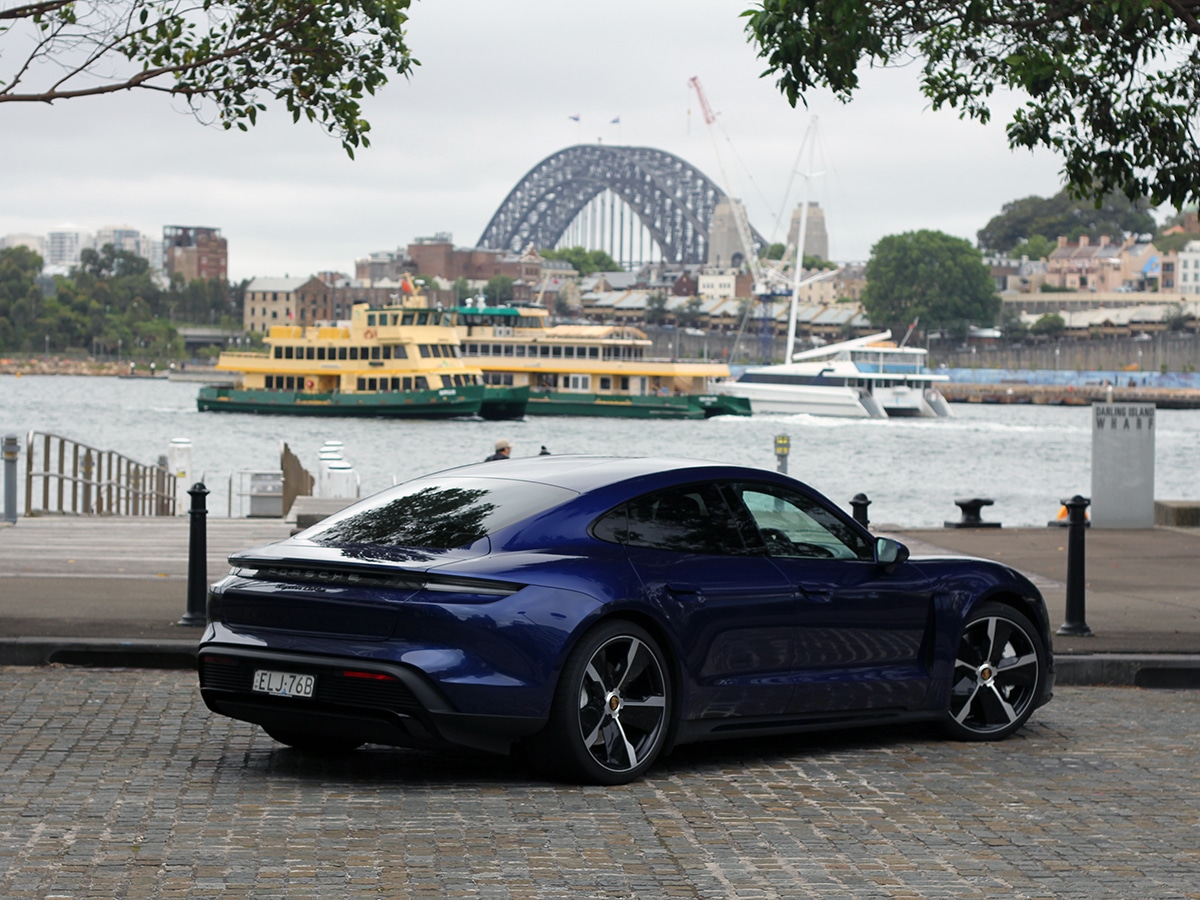
Porsche Taycan Turbo – Initial Impressions of an EV
| 2021 Porsche Taycan Turbo | |
| Price | from $276,300 |
| Test Colour | Gentian Blue metallic |
| Options |
|
| Price as tested | $304,500 |
The EV experience starts from the moment you hit the ‘unlock’ button on the keyfob. Door handles pop out to greet you (and tuck back away to minimise drag), the dashboard lights up and the car turns on as soon as there’s weight in the seat.
There’s no ‘start button’ or handbrake to disengage. Simply bump the gear selector into drive, take your foot off the brake and you’re moving. It’s extremely seamless, deft of clunky gearboxes, and completely noiseless for all but the most feint EV sound. Pleasant, would be the best describer.
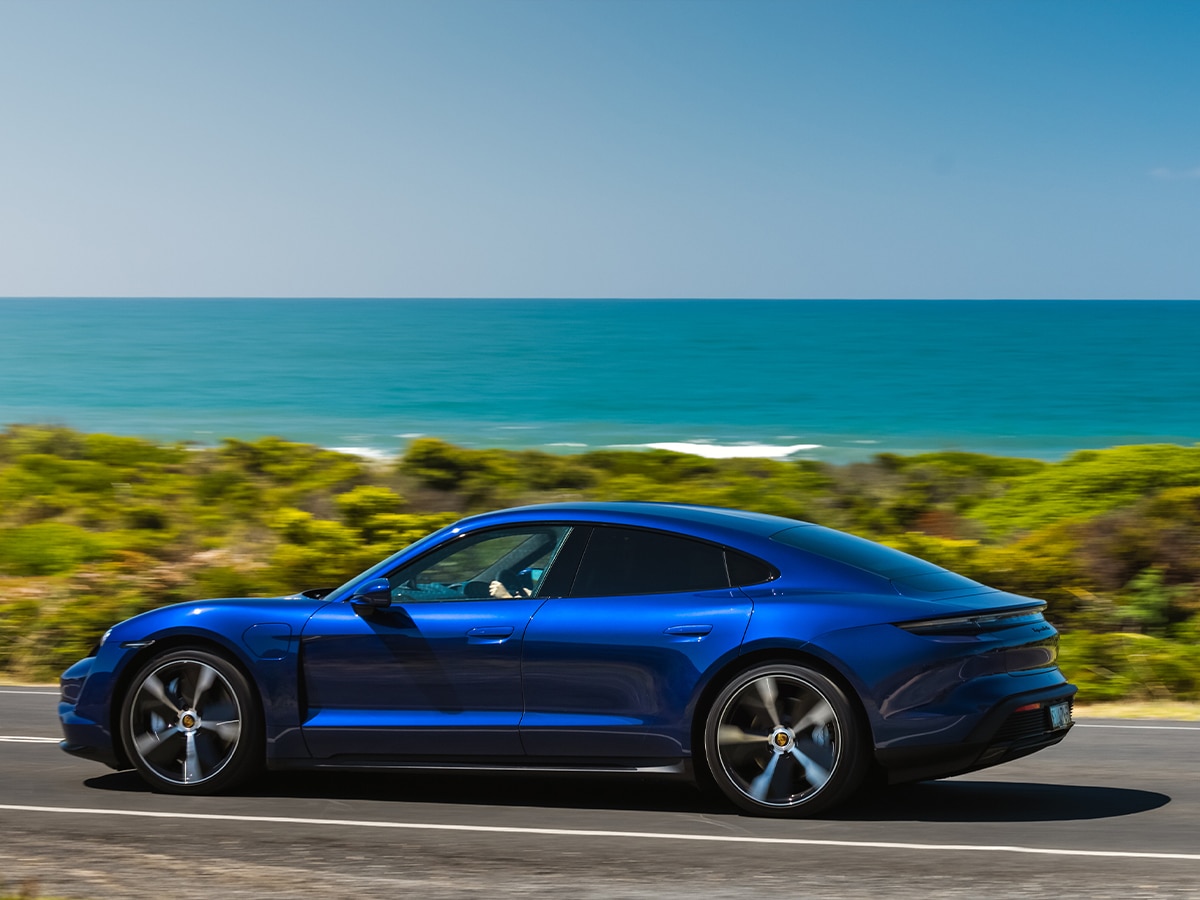
Driving an EV
It takes no more than 10mins of driving to realise no amount of instant acceleration and gut-wrenching speed can make up for banging gears, turbo wastegates, and exhaust crackles. But for many, this lack of visceral (we tried not to use that word) energy simply adds to the experience.
Our test model, the Taycan Turbo, starts just under $300,000 AUD before on-road costs. You’re in supercar territory at that end of the spectrum and you only have to look at the Porsche 911 range to find more excitement when it comes to pure driving pleasure. The term is flipped on its head when it comes to EV’s, the ‘pleasure’ comes from the instant acceleration that allows you to place the car exactly where you want it in traffic, on the freeway, or simply merging onto main roads – just make sure you keep your eyes on the speedo.
The weight, while a disadvantage on the track, almost adds to Taycan’s ride quality on the street. Without a shadow of a doubt, this is the best riding car we drove in 2021 and has now become the benchmark in our eyes for sheer comfort.
The lack of moving parts up front certainly helps the car feel smoother to drive than your average internal combustion-engined dinosaur (especially over rough tarmac), and the one-pedal driving modes work seamlessly once you get your head around the car bringing itself to a stop. It’s quite hilarious in some ways that the Taycan comes with such large brake rotors when the engines themselves provide more than enough braking for everyday use.
Of course, the addition of white brake calipers demonstrate this point to a tee and we haven’t even mentioned how good Porsche’s electronically assisted steering is… it’s still the best in the game, bar none.
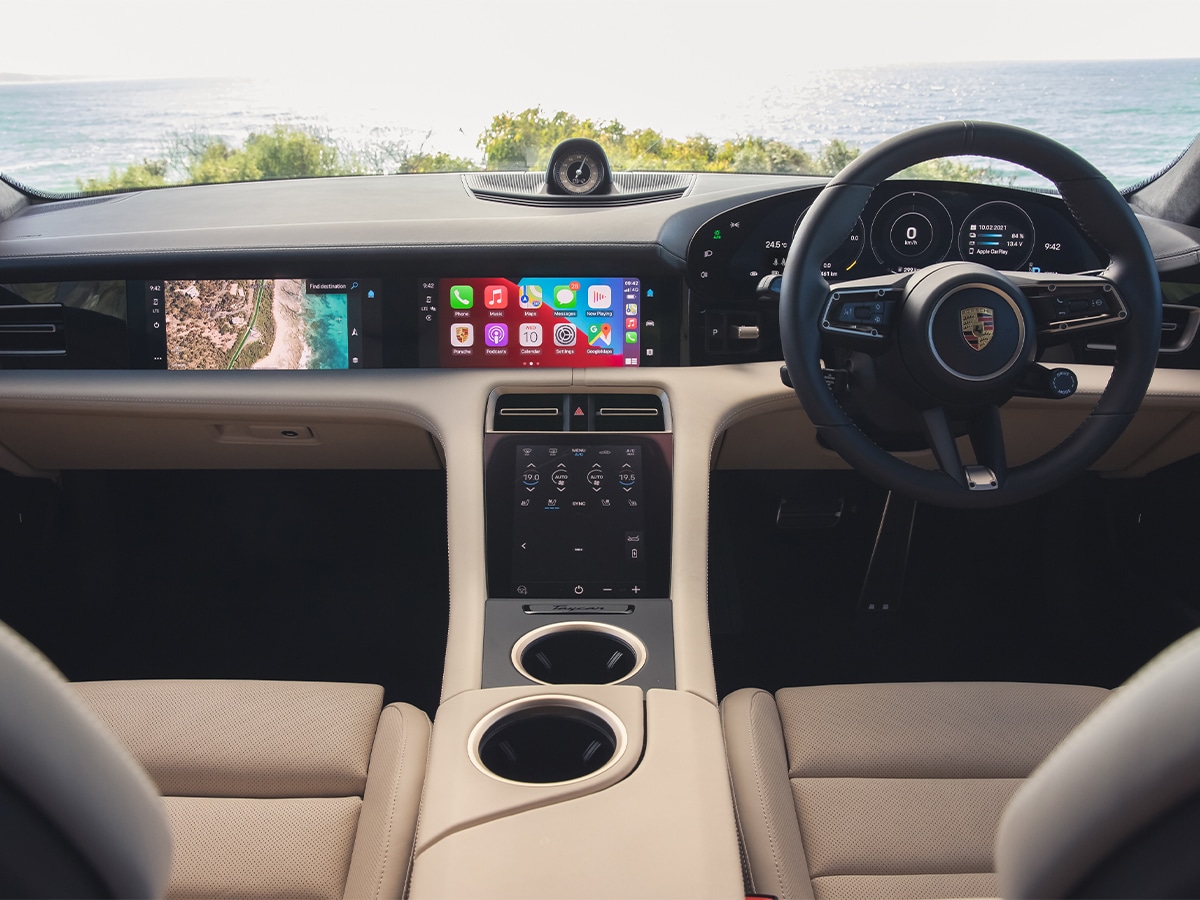
What’s the Tech Like?
These cars are feature ridden. We’d save words by writing the features this car doesn’t have, but just know it’s got everything you could possibly want in a car at this price and then some. You’d come to expect all the usual stuff from Porsche, including Apple Carplay, outstanding speakers, and more than enough screen real estate to manage everything accordingly, but it’s the ‘other’ stuff that really takes the ownership experience above and beyond. Even if it doesn’t have Android Auto.
We absolutely loved the front nose lift that uses GPS to automatically lift the nose up and avoid scrapes on driveways and carparks when it’s set. The optional second screen (just above the glovebox) as fitted to our test car meant the phrase “pass the AUX” is now a thing of the past as the passenger can control the beats while the driver focuses on the road simultaneously. Being an EV, it’s all about the environment and synthetic leather is used throughout the cabin to reduce methane emissions as it relates to those pesky cows – it’s extremely soft to the touch.

Motor Setup and Batteries
| 2021 Porsche Taycan Turbo Power Specifications | |
| Engine | Dual AC synchronous electric motors |
| Power | 460kW (500kW w/ Overboost) |
| Torque | 850Nm |
| Drive type | All-wheel drive |
| Transmission | Automatic – single-speed front, two-speed rear |
Porsche Taycan Turbo utilises two motors over the front and rear axle. While this is a common application for EV’s the Porsche engineers fitted a supplementary gearbox to the rear axle that allows the car to shift into ‘second-gear’ something that’s quite unusual for an EV. Maybe the only time the car feels mechanical in the slightest, it engages after that first burst of acceleration when burying your foot. After you feel it kick in all hell breaks loose and the car gets up to jail-time speeds before you can blink.
The combined power of the twin motors is 500KW and 850Nm, and when we had the cars on the track at Tailum Bend, we saw 0-100km/h times fall below 3-seconds. A lot quicker than the quoted times from the manufacturer that we believe are likely inaccurate to ease customers into the driving seat.
Powering those motors is a 93.4kWh battery that delivers 420km of range. Unlike many EV’s, the batteries offer a ‘foot-garage’ for rear passengers as they aren’t laid our flat across the entire chassis.
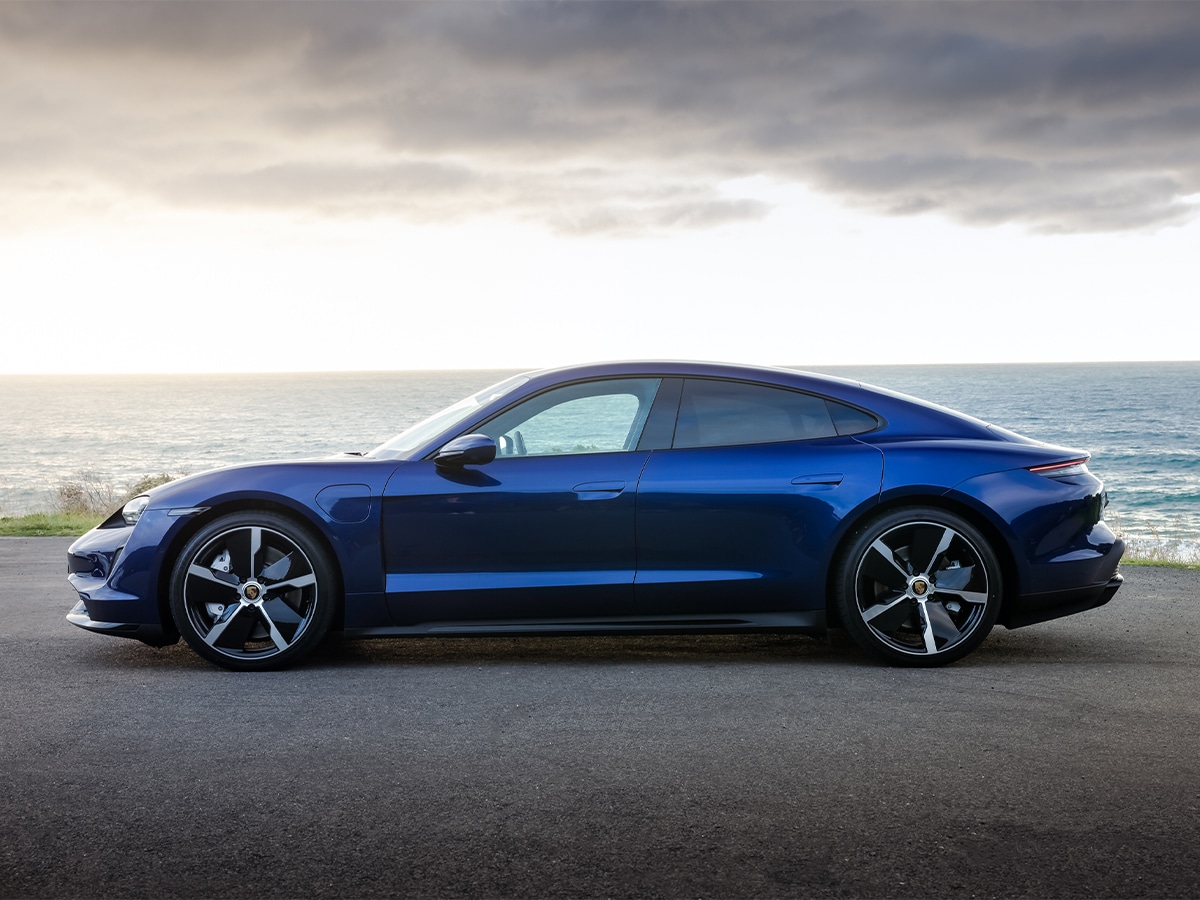
Charging
Porsche has delivered an exceptional product when it comes to charging. The Taycan Turbo is one of only a handful of 800-volt EVs on the market. Being the beneficiary of ports on either side of the vehicle, the charging time for 5-80 per cent SoC (state of charge) is 22.5 minutes in ideal conditions at 800-volt high-power charging stations, with a maximum charging capacity (peak) of 270 kW. We never saw a reason to charge it so quickly, but it’s handy nonetheless.
Most Taycan owners will charge their car overnight at home. In some cases, you will have to upgrade certain aspects of your home electrical systems to cope with the Amp’s on offer, but it’s convenient nonetheless. Charging the car at the 11kW peak takes about 9-hours. As we aren’t set up for 11kW charging at home, our charging experience was left for the charging network of Sydney’s Northern Suburbs. And it was underwhelming, to say the least.
While the brand has done almost all they can to ensure convenience to the customer, the onslaught of Tesla Model 3’s (now outselling Toyota Camry’s) and lack of charging stations for residential areas that are mostly made up of apartments it’s a real hassle. If you live in an apartment, your charging options look just like ours – lacking. We’re not going to sit here and point the finger at anyone in particular but if apartment complexes aren’t built with charging bays for electric cars there’s going to be a serious issue with charging your car away from where you live.
There’s a flow-on effect with EV owners who can’t charge at home – they go to the local shops. For example, our local Westfield has around 20-charging bays within the precinct, 90% of the time there was a Tesla Model 3 sitting in the charging bay, and the other 10% was people who couldn’t find a park and took the spot anyway (Non-EV Owners). Frustrating to say the least. Interestingly this was only really an issue when the charger on offer was ‘free’ e.g. a partner company with the brand.
So what are the alternatives? In the case of Porsche, they’ve partnered with ChargeFox to offer free charging at any of the 50KW ChargeFox network chargers littered across all major cities (primarily CBD areas). Not only do you receive free charging up to 50KW, but you get 3-years of free charging at 350KW fast chargers. See the map below to find a charger near you.
Paying to charge at a non-partner site costs about $6 for two hours.
Porsche Charging Map (Australia)
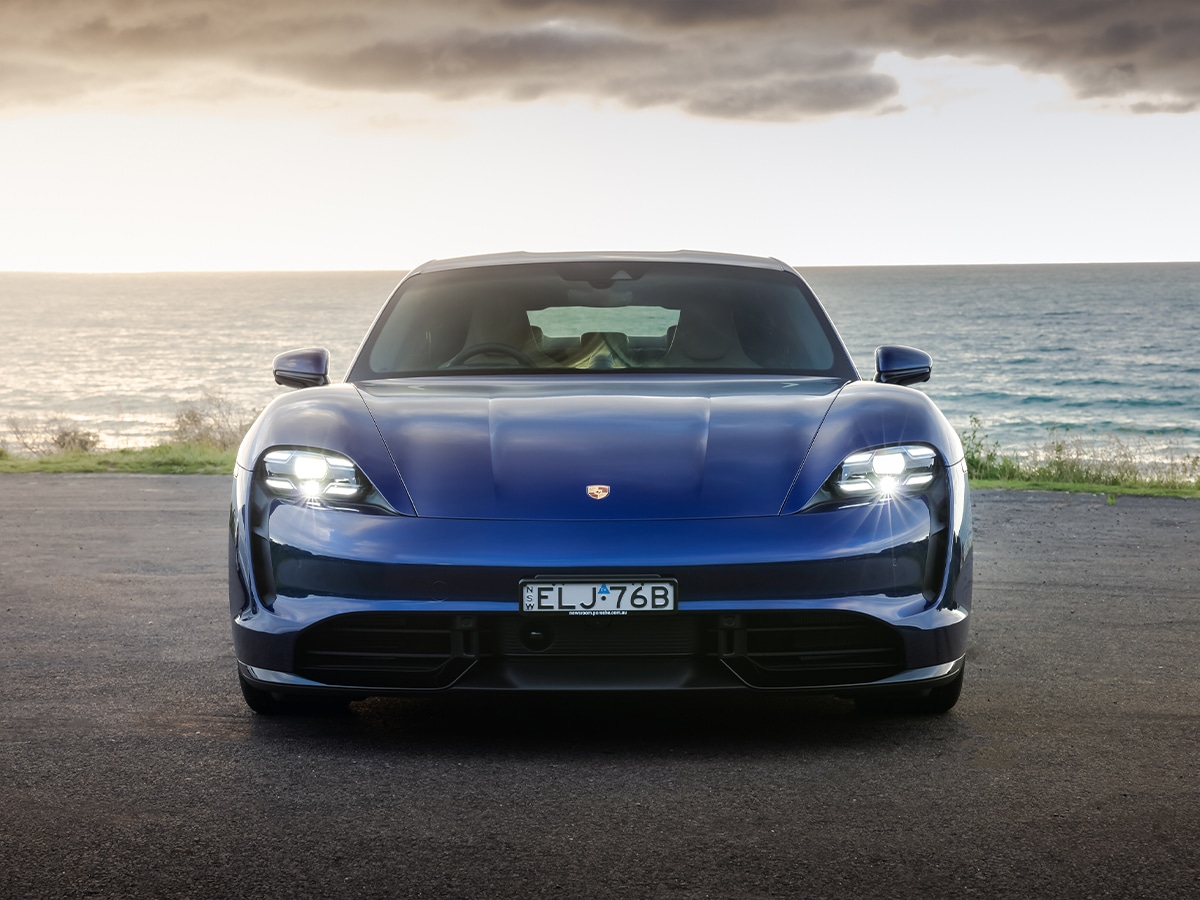
How Was Our First EV Experience?
| Warranty | Three years / unlimited km |
| Service intervals | 24 months / 30,000km |
Through the eyes of a true petrol-head, an EV is never going to quench our thirst for combustion engines, but that’s ok.
The way we theorise owning an EV is simple.
Even the most diehard petrolhead like ourselves spends most of the time driving to work, the shops, or going out for leisure. These tasks alone probably account for 90% of our time spent in a car and an EV will suit these needs to absolute perfection. Fundamentally speaking, the convenience of owning an EV (when charging at home) is something of which no internal combustion-engined vehicle can offer. The automation is next level, the ride quality is superb, and the instant acceleration is impressive, but also very convenient when merging, changing lanes, and driving in traffic. It doesn’t stop there.
In the case of our first EV experience, we were driving a Porsche EV – and at no point did we forget it.
The driver feedback through the steering wheel, pedals, and chair of the seat is up there with all the best Porsche’s we’ve driven. It feels like a car, not an appliance, and what the Taycan loses in noise it gains in comfort, doing enough to really make you weigh up how much you really need all that noise and sound and mechanical stuff along the way. We’d call it a classic case of mind over matter, but if the Taycan is a taste of what the future of EVs looks like, we’ll be happy to take the petrolhead mindset out of the equation for a drive in one any day.
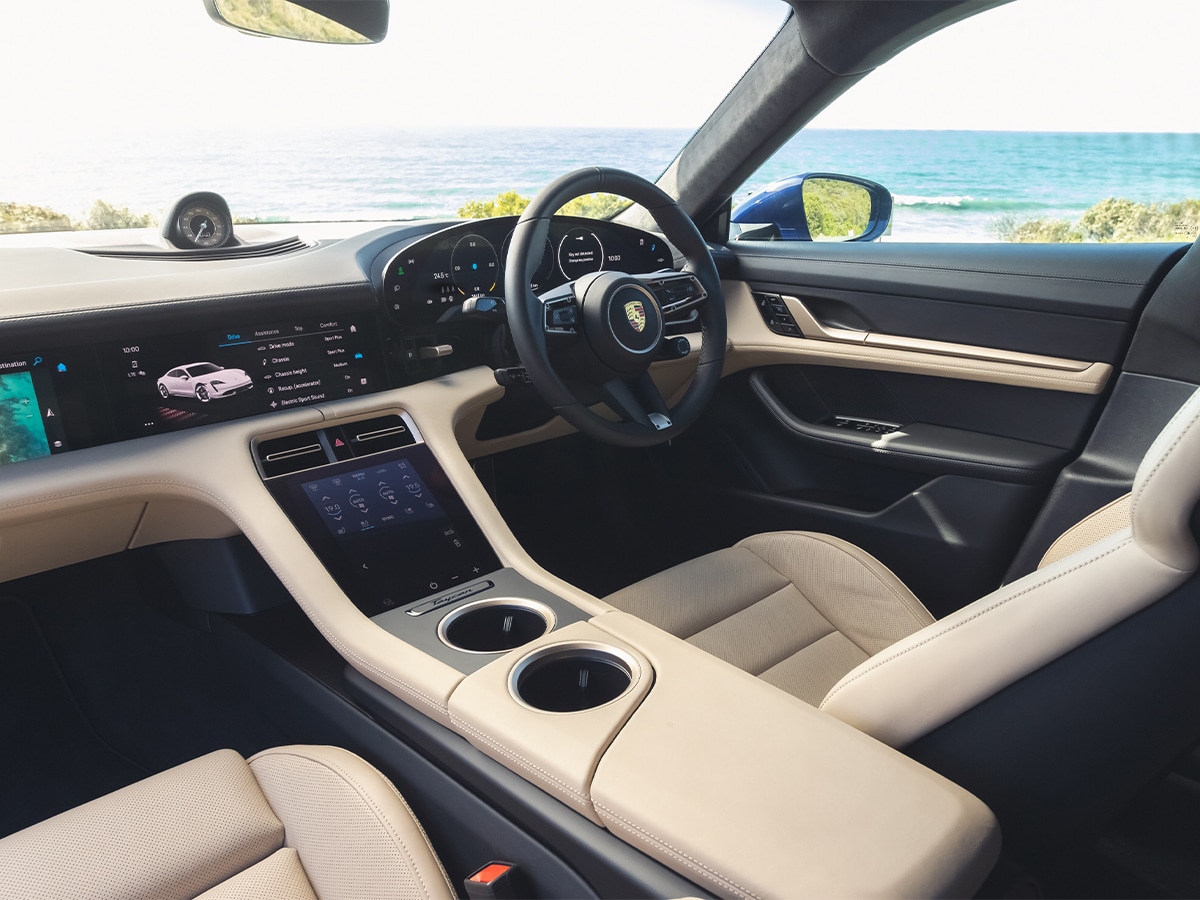
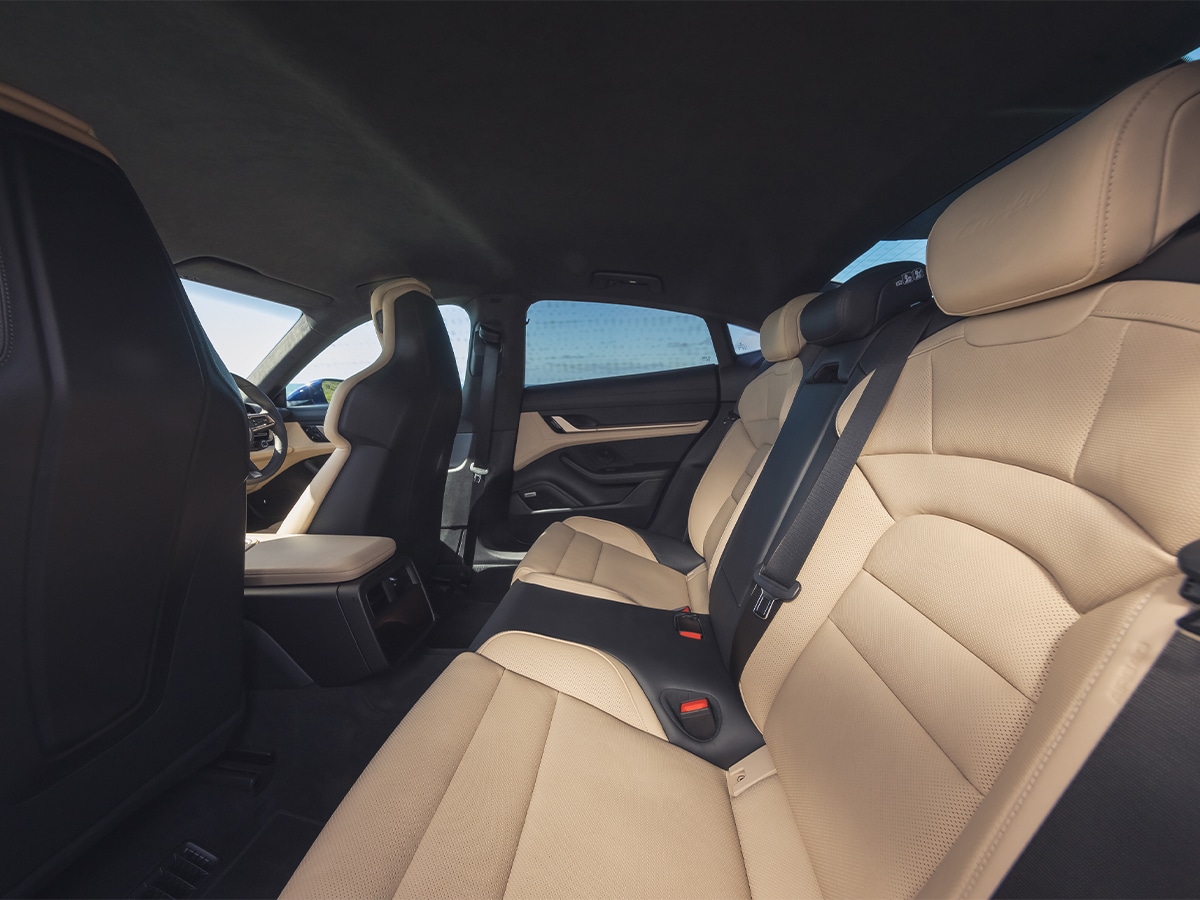
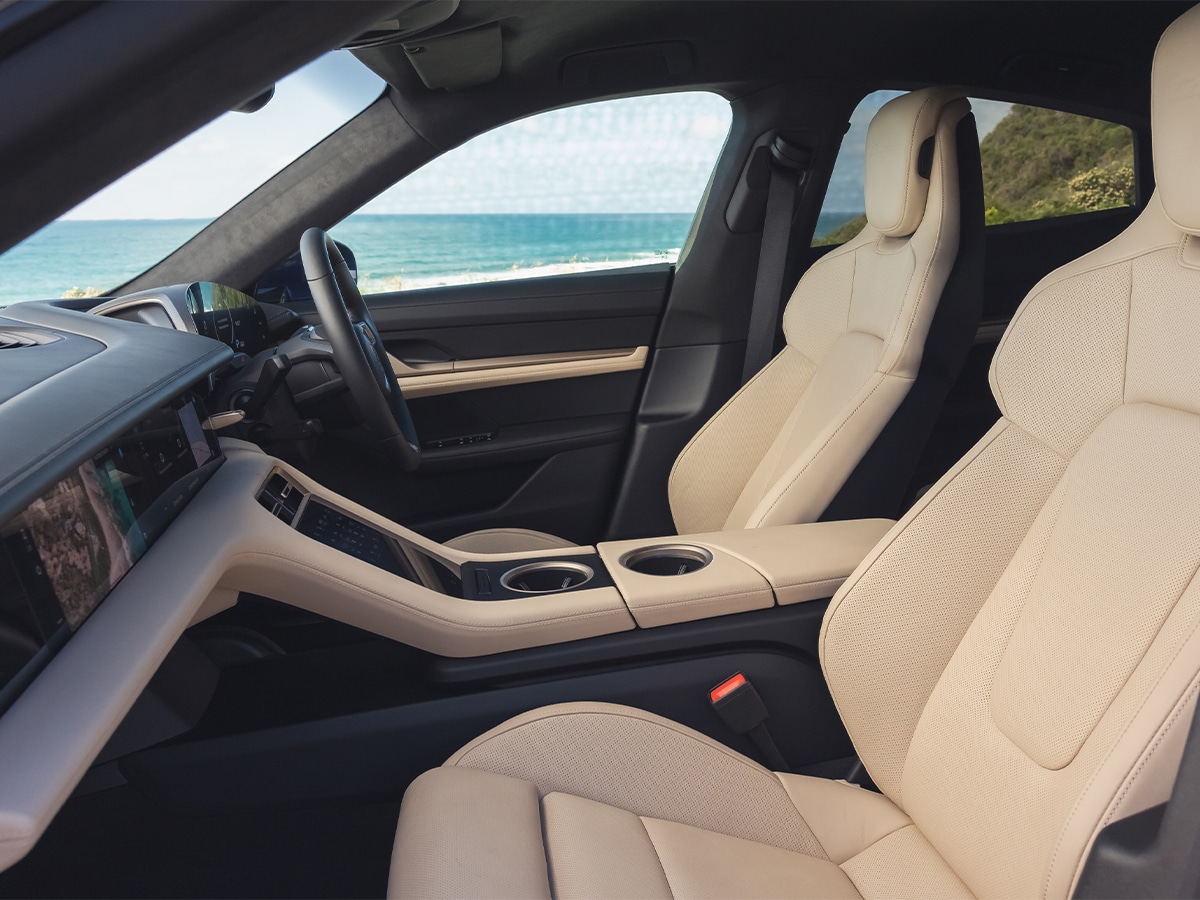
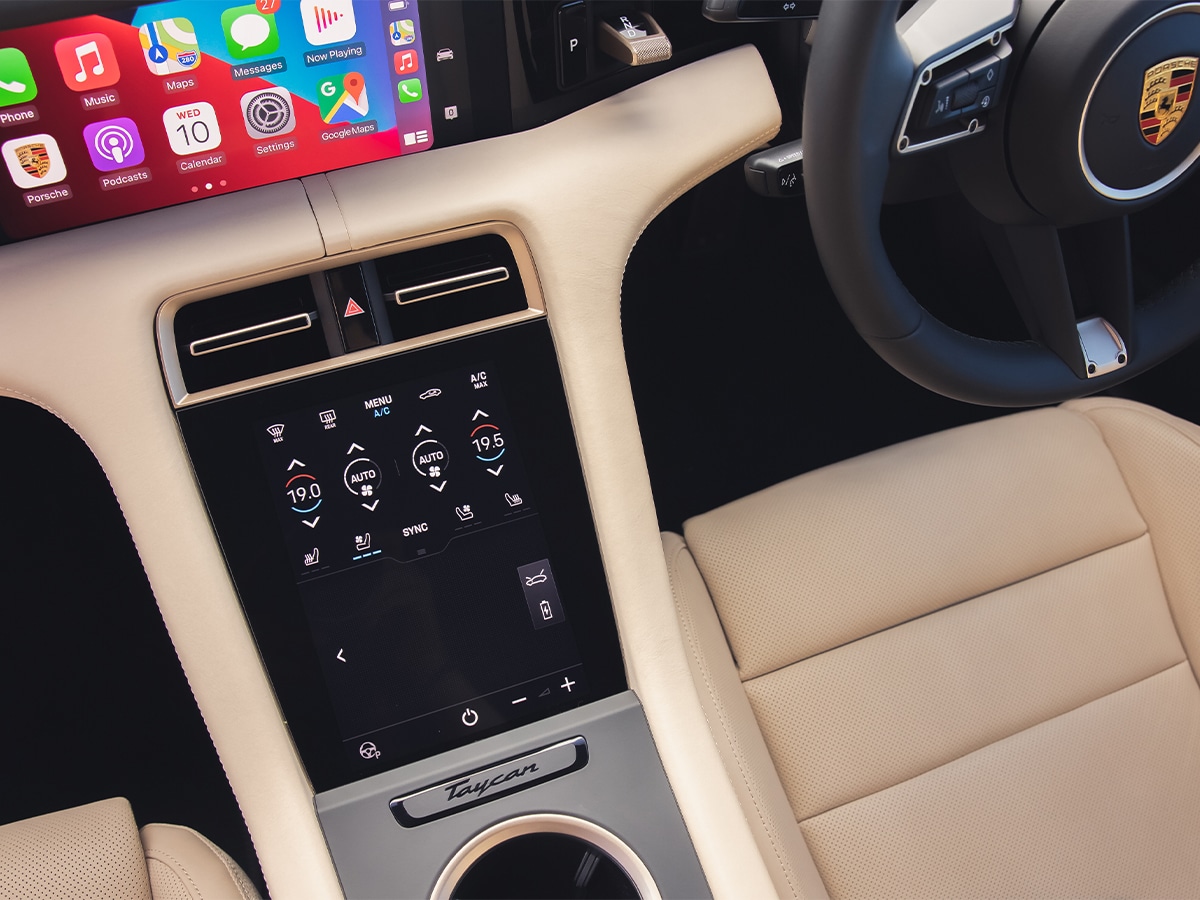
You’ll also like:
Like a Good Watch, The Porsche Panamera Goes Platinum
With the Heart of a GT3, the Porsche 718 Cayman GT4 RS is Made for Driving Pleasure
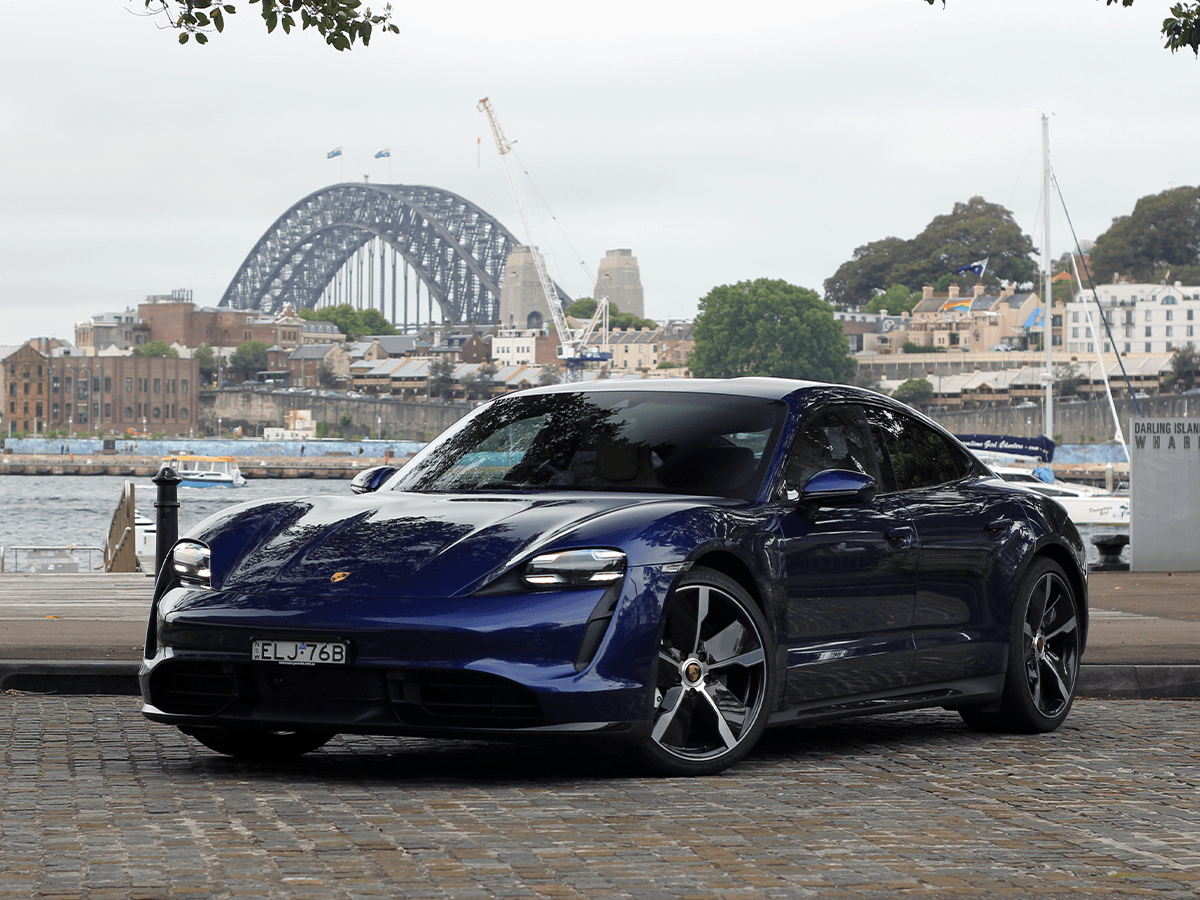















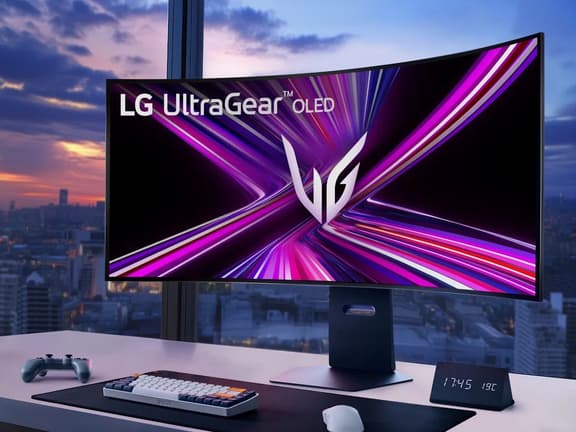





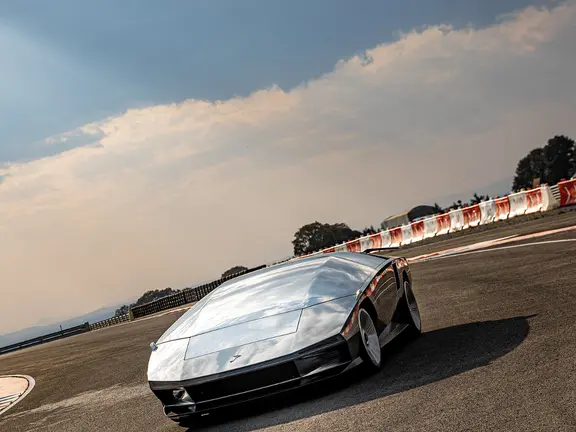





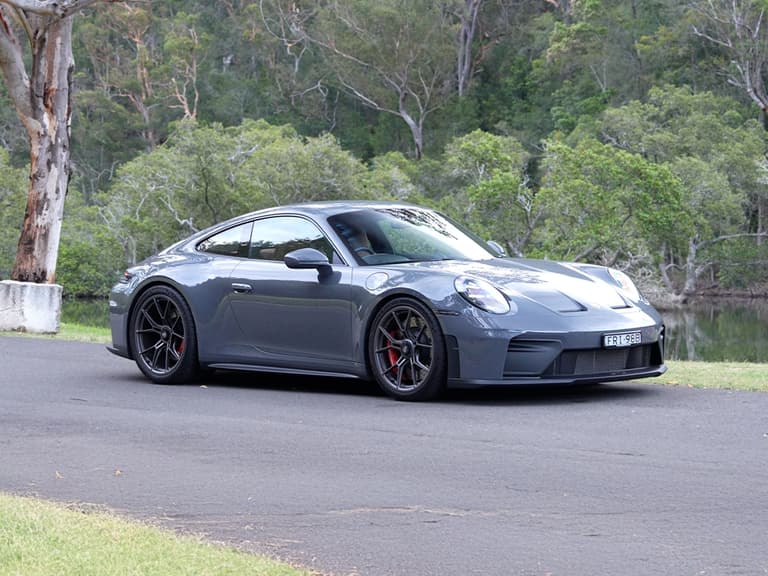
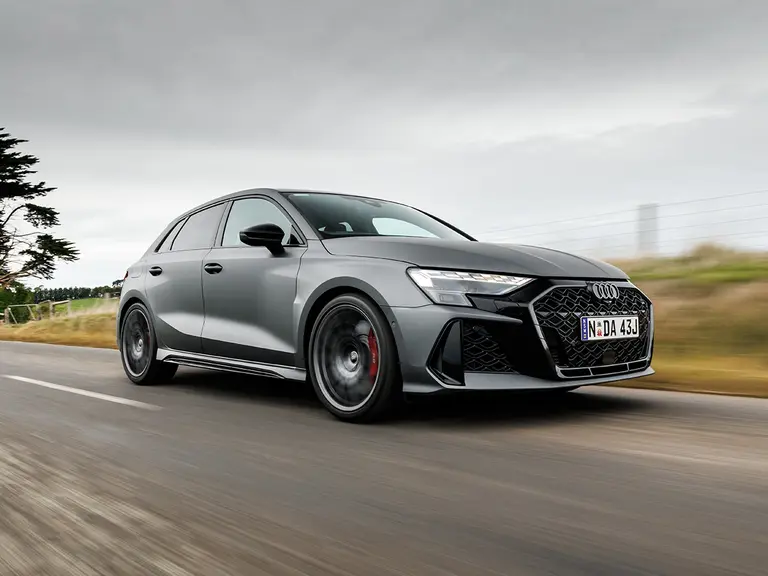
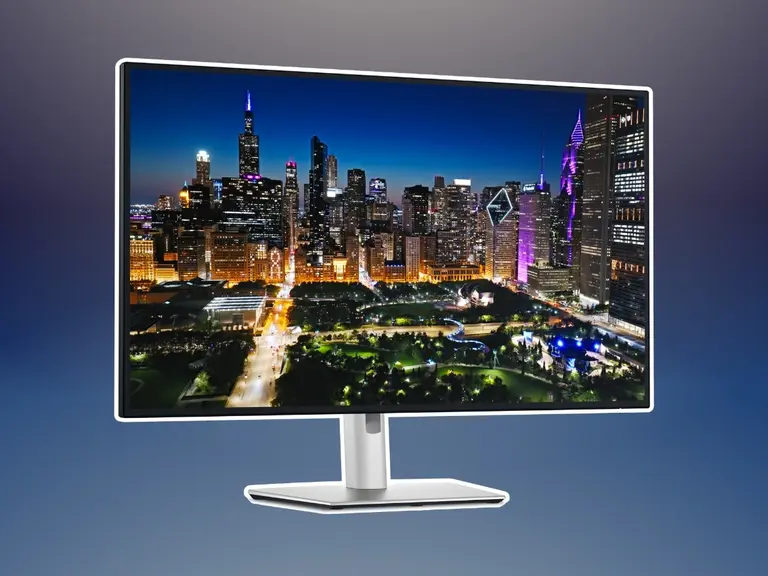
Comments
We love hearing from you. or to leave a comment.